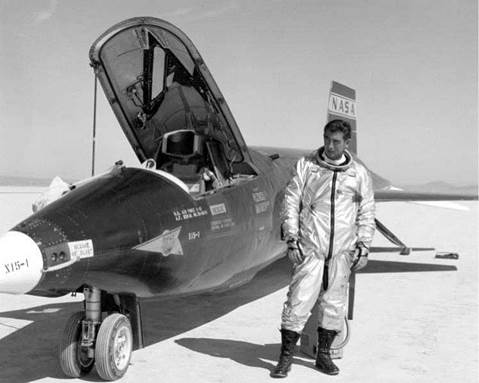SPACE FLIGHT METHODS
As the quest for space began, two methods of getting there were investigated, both requiring rockets for power. One was to develop winged craft which would access space from a carrier aircraft in the upper atmosphere and would perform a guided entry and landing for the return. The other was to use blunt-ended capsules on top of former military missiles shot through the atmosphere on ballistic trajectories, relying on the increasing density of the atmosphere to slow the return sufficiently for parachutes to finish the landing.
Rocket planes
The first powered steps towards space were made by a series of American rocket – propelled aircraft. In October 1947, the first supersonic flight was made by the X-1, piloted by Chuck Yeager. In 1963, an X-15 rocket plane piloted by Joe Walker reached an altitude of 106 km (66 miles). The majority of rocket planes were indeed released from carrier aircraft at high altitude before igniting their onboard rocket engines for a quick climb to the fringes of space and then a gliding landing on a runway. One of the X-15s flew at over Mach 6 in 1967. Together with several strangely shaped, blunt-bodied, wingless vehicles known as lifting bodies (which evaluated the
|
Pilot Mike Adams with the X-15 |
technological possibilities of a vehicle that could survive heat of re-entry, fly at subsonic speeds and still make a controlled horizontal landing), such programmes would lay the groundwork for what eventually became the Space Shuttle. The X-Prize winners Spaceship One drew upon the same legacy.











